Receiving a payment
An incoming payment is where you declare that you expect an incoming payment, and an address or payment destination is allocated for you to give out. The wallet then monitors the blockchain for usage of this payment destination for a payment, and closes out the incoming payment when either an expiry time has passed or payment is detected, retrieved and processed.
When you want to create an incoming payment, the first thing you do is go to the “Receive” tab. Here you can see a simple form you fill out to create a new incoming payment, and a list showing existing incoming payments.
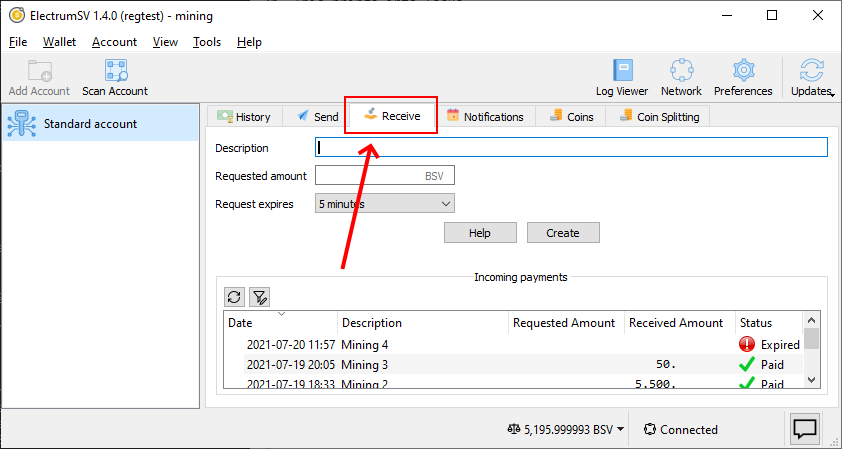
The “Receive” tab where incoming payments are created and viewed.
The minimum information you need to provide when creating an incoming payment is the description. If you provide no amount, it will be closed and considered paid if it receives any payment before the expiration period ends. You can also opt not to provide an expiration period, and have it sit there indefinitely. If it expires before the payer pays, then you can of course scan the blockchain to detect it later.
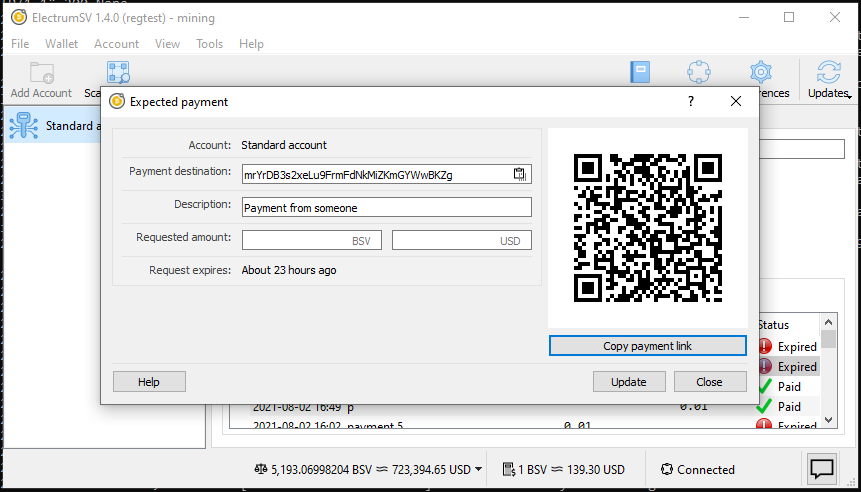
The “Expected payment” dialog shown when you create an incoming payment.
This list is updated in real time. As the expiration period for an incoming payment ends, an expected payment is marked as expired and we stop watching the blockchain for activity related to it. As we detect activity related to an expected payment, we process those transactions and if there is no requested amount or the incoming value in those transactions is greater than or equal to the requested amount we mark the expected payment as paid and stop watching the blockchain for activity related to it.

The incoming payment list at the bottom of the “Receive” tab.
Giving out the payment destination
There are several ways you can give the payment destination for your newly created expected payment, to whomever you expect to pay it.
Copying the payment link
The advantage of copying the payment link and giving it to your payer, is that they should just be able to paste it into their wallet and they should see all the main details get incorporated into their wallet’s user interface. The payment destination itself, the amount and the description of what the payment is for.
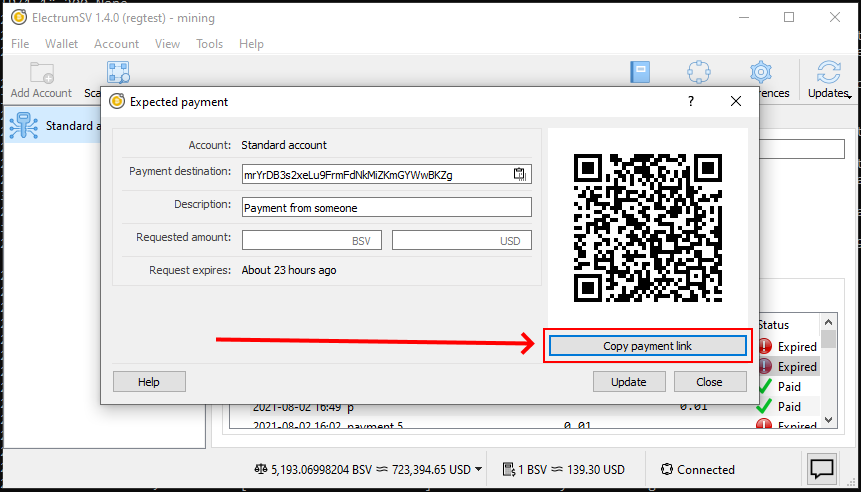
The “Copy payment link” button.
The payment link from the screenshot above is as follows. It will of course differ for your payment. The specification that defines these payment URLs is BIP21.
bitcoin:mrYrDB3s2xeLu9FrmFdNkMiZKmGYWwBKZg?sv&message=Payment%20from%20someone
If you paste this payment link into the “Pay to” field in the “Send” tab, you can see how ElectrumSV and ideally other wallets will populate for form for the payer. Note that the address in the payment link is a testnet address, and is not usable on the real Bitcoin SV blockchain - the mainnet.
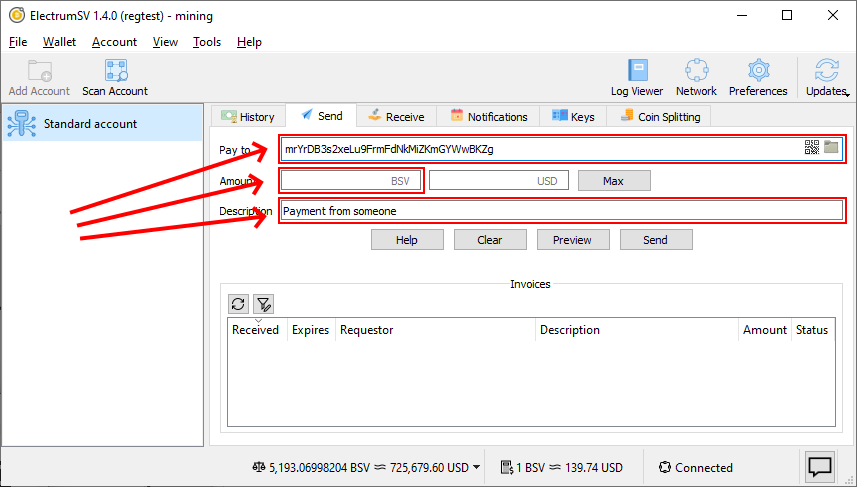
The “Send” tab form populated from the copied payment link.
Copying the raw payment destination
In some cases, you might just want to give the payer the raw payment destination which will either be an address or a BIP276 script.
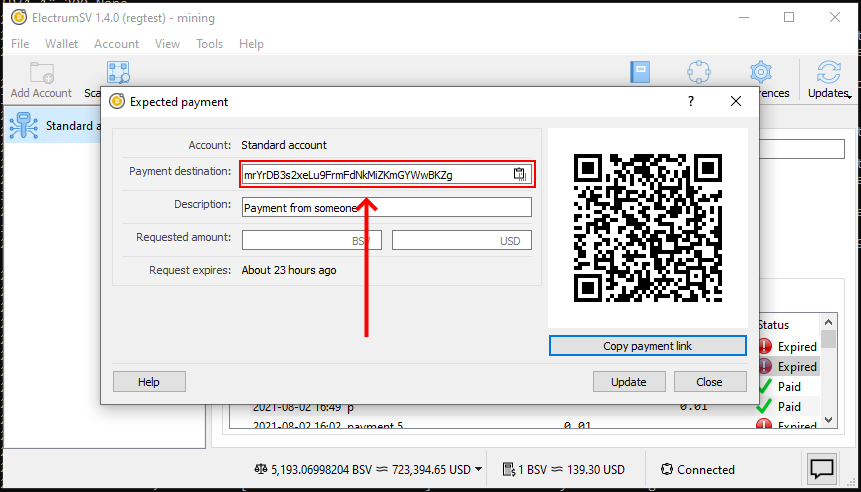
Copying the raw payment destination.
Using a QR code
If the other party is standing there with you, you can show them the expected payment dialog and they can take a photo of the QR code with their wallet. Their wallet will extract the address and streamline the payment process.
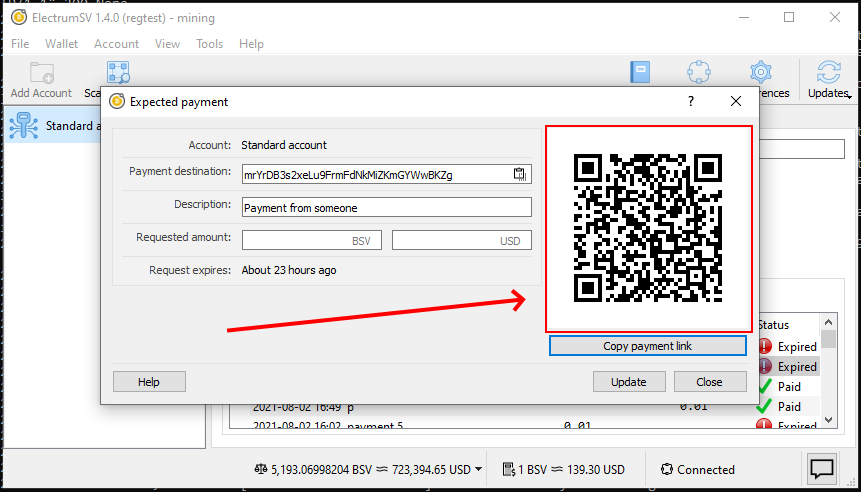
The QR code provided in the expected payment dialog.
Identifying incoming payments
In the legacy model, which is still the most common one, payments are fire and forget. The payer constructs a transaction and broadcasts it to the blockchain. Then when your wallet gets a notification a payment of interest has appeared in the blockchain, it retrieves that transaction and factors it into the related account.
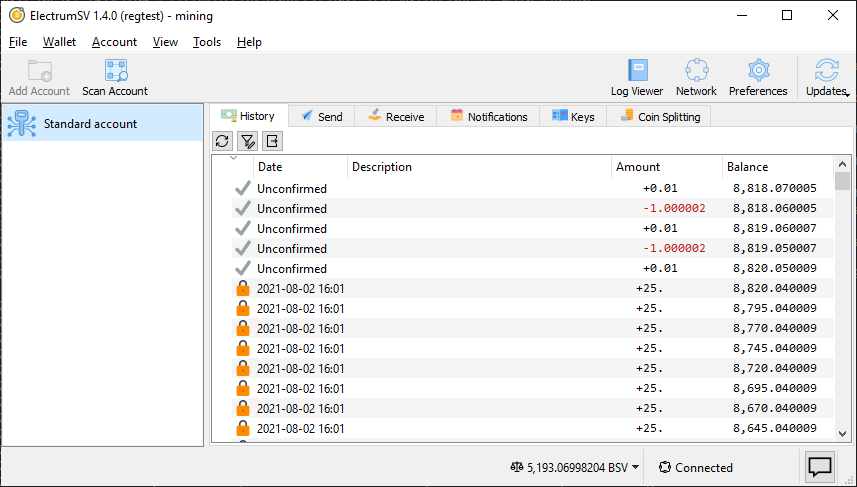
The history tab when awaiting an incoming payment.
With this model, the wallet has no idea a payment is incoming until it arrives out of the blue. A new and better model is available in the form of Paymail, but ElectrumSV does not have the service infrastructure to support it at this time. We are however working towards it.